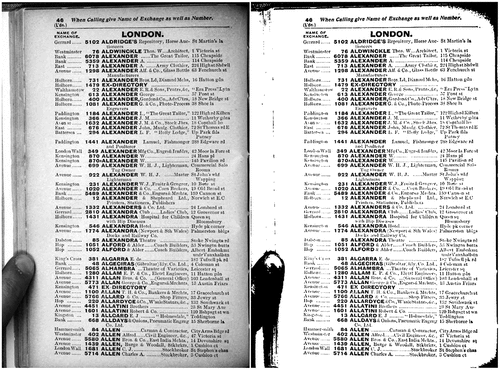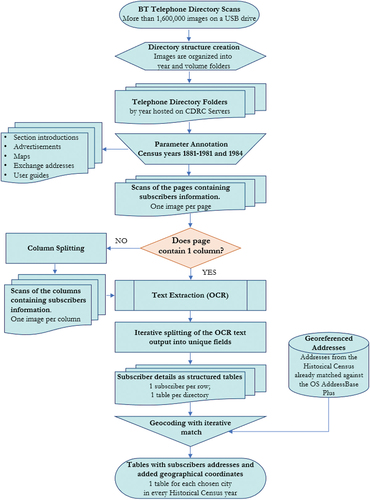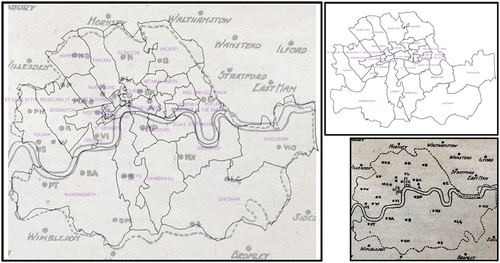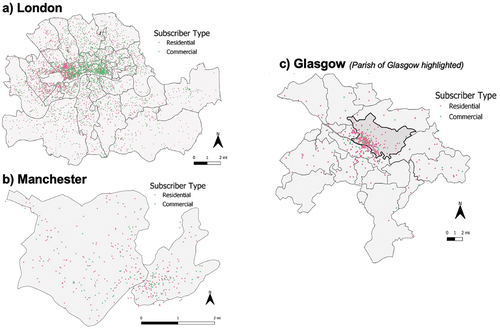Figures & data
Table 1. Numbers of unique directories and of subscribers available from the digital scans from 1881 to 1951.
Table 2. Examples of the different types of telephone directories that were made available by BT archives for this research.
Table 3. Classification of directory pages prior to digital encoding of names and addresses.
Figure 2. Use of binarization (right) to increase contrast of a scanned image (left). Example shows a scanned archive page from 1901.

Table 4. Some functions of the ‘teldiR’ package and examples of their use cases.
Table 5. Key differences between common measures of inter-string distance implemented in R.
Table 6. Most common detected encoding errors (London directories).



